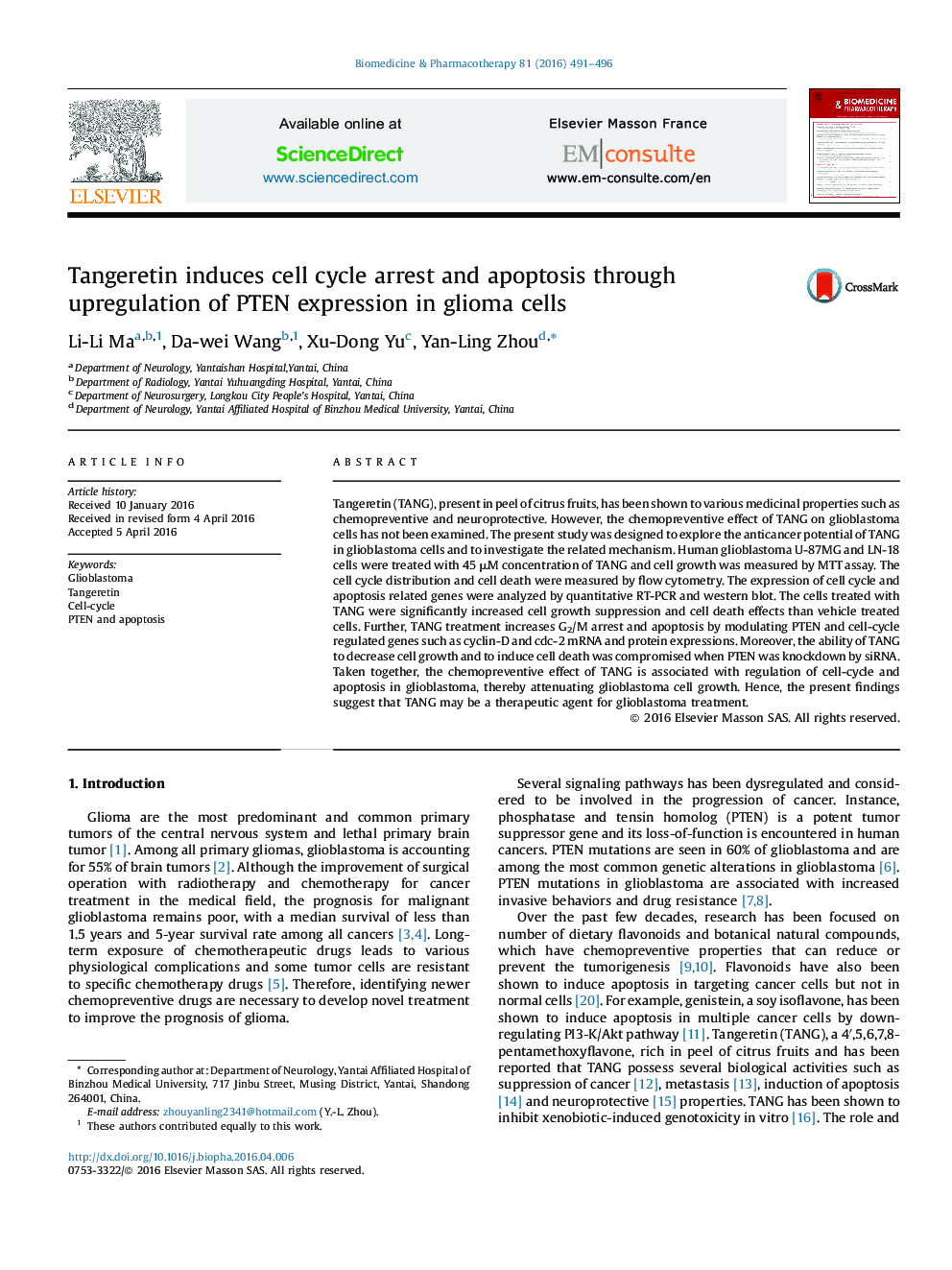| Article ID | Journal | Published Year | Pages | File Type |
|---|---|---|---|---|
| 2523718 | Biomedicine & Pharmacotherapy | 2016 | 6 Pages |
Tangeretin (TANG), present in peel of citrus fruits, has been shown to various medicinal properties such as chemopreventive and neuroprotective. However, the chemopreventive effect of TANG on glioblastoma cells has not been examined. The present study was designed to explore the anticancer potential of TANG in glioblastoma cells and to investigate the related mechanism. Human glioblastoma U-87MG and LN-18 cells were treated with 45 μM concentration of TANG and cell growth was measured by MTT assay. The cell cycle distribution and cell death were measured by flow cytometry. The expression of cell cycle and apoptosis related genes were analyzed by quantitative RT-PCR and western blot. The cells treated with TANG were significantly increased cell growth suppression and cell death effects than vehicle treated cells. Further, TANG treatment increases G2/M arrest and apoptosis by modulating PTEN and cell-cycle regulated genes such as cyclin-D and cdc-2 mRNA and protein expressions. Moreover, the ability of TANG to decrease cell growth and to induce cell death was compromised when PTEN was knockdown by siRNA. Taken together, the chemopreventive effect of TANG is associated with regulation of cell-cycle and apoptosis in glioblastoma, thereby attenuating glioblastoma cell growth. Hence, the present findings suggest that TANG may be a therapeutic agent for glioblastoma treatment.
